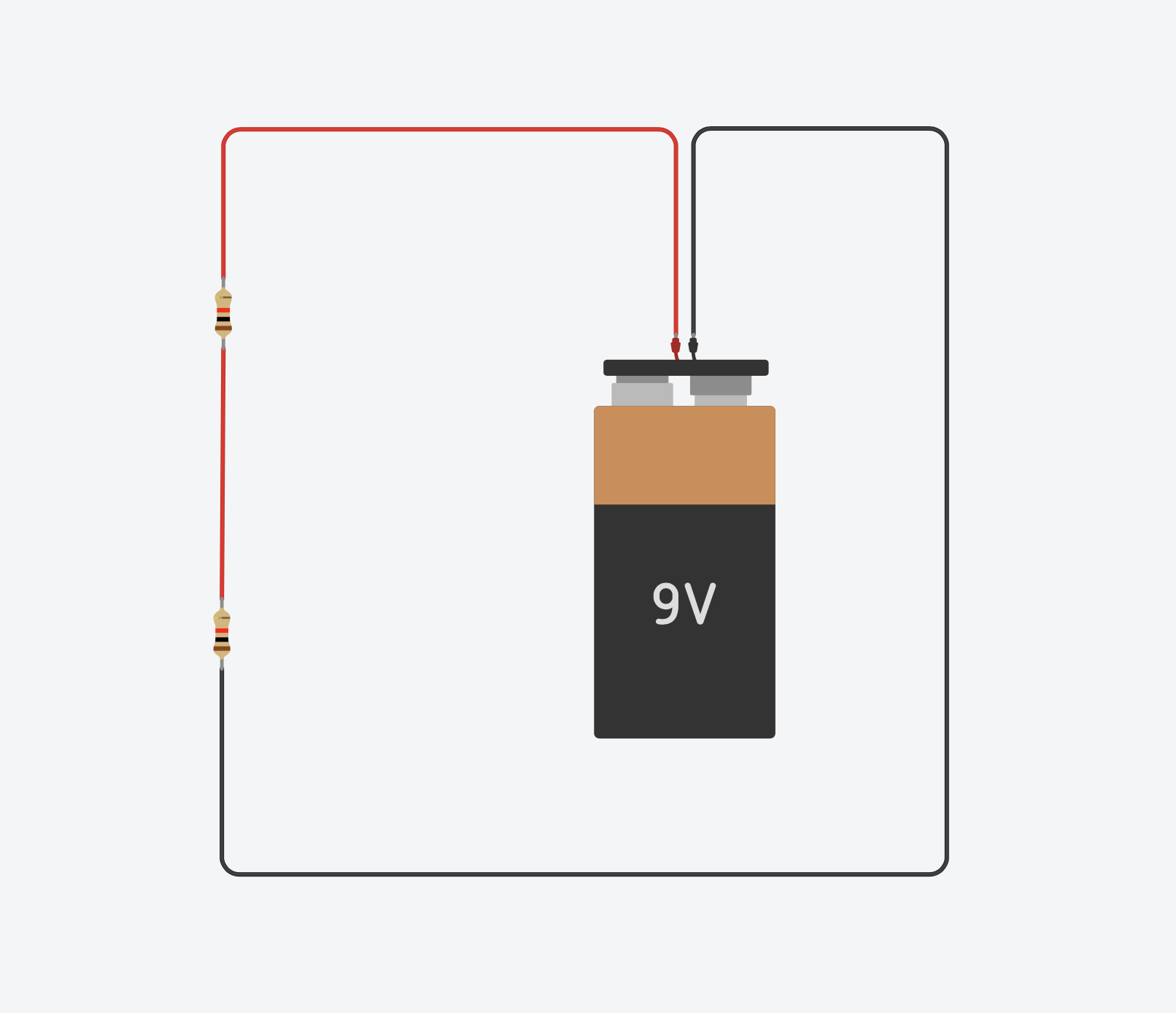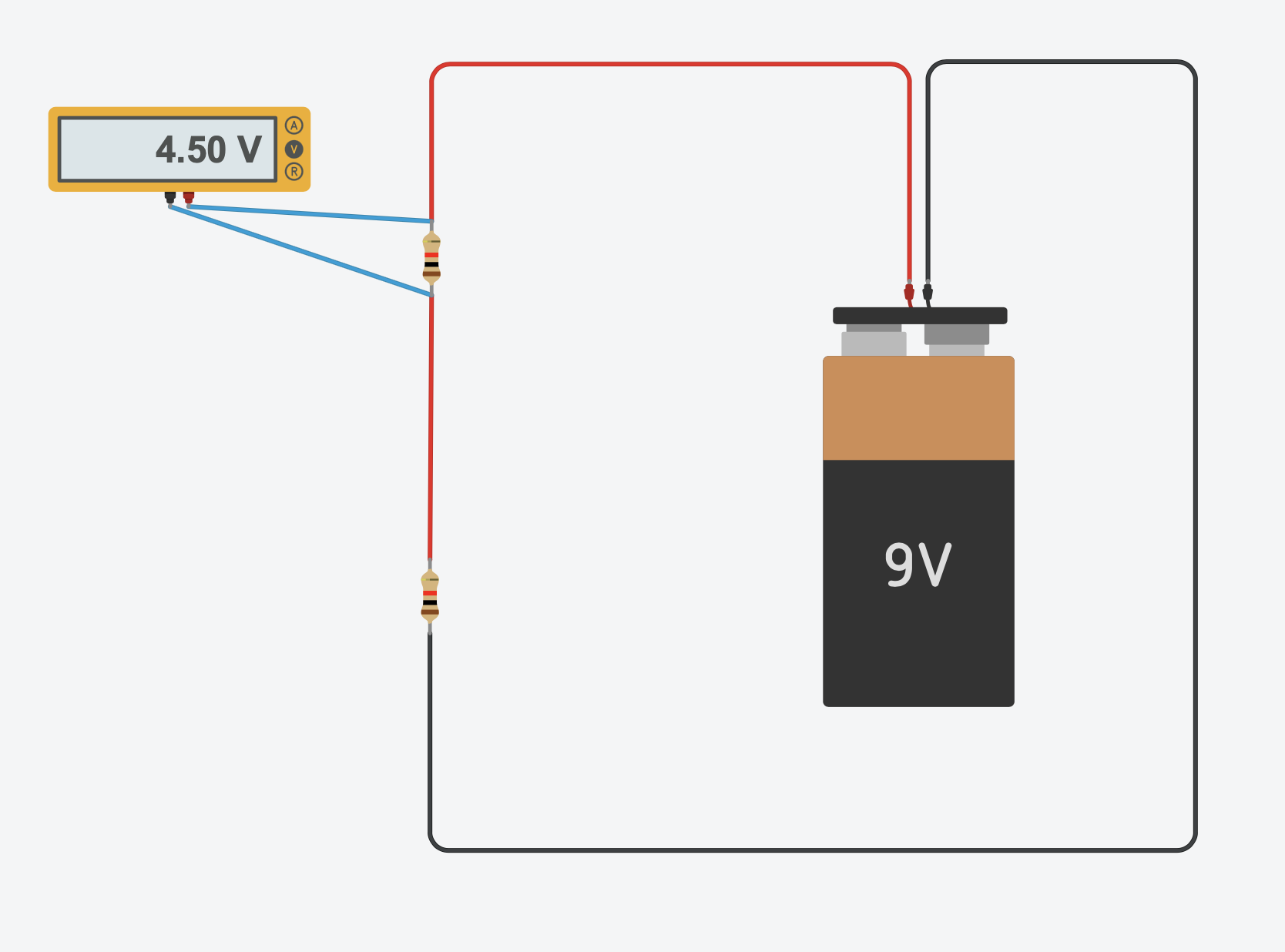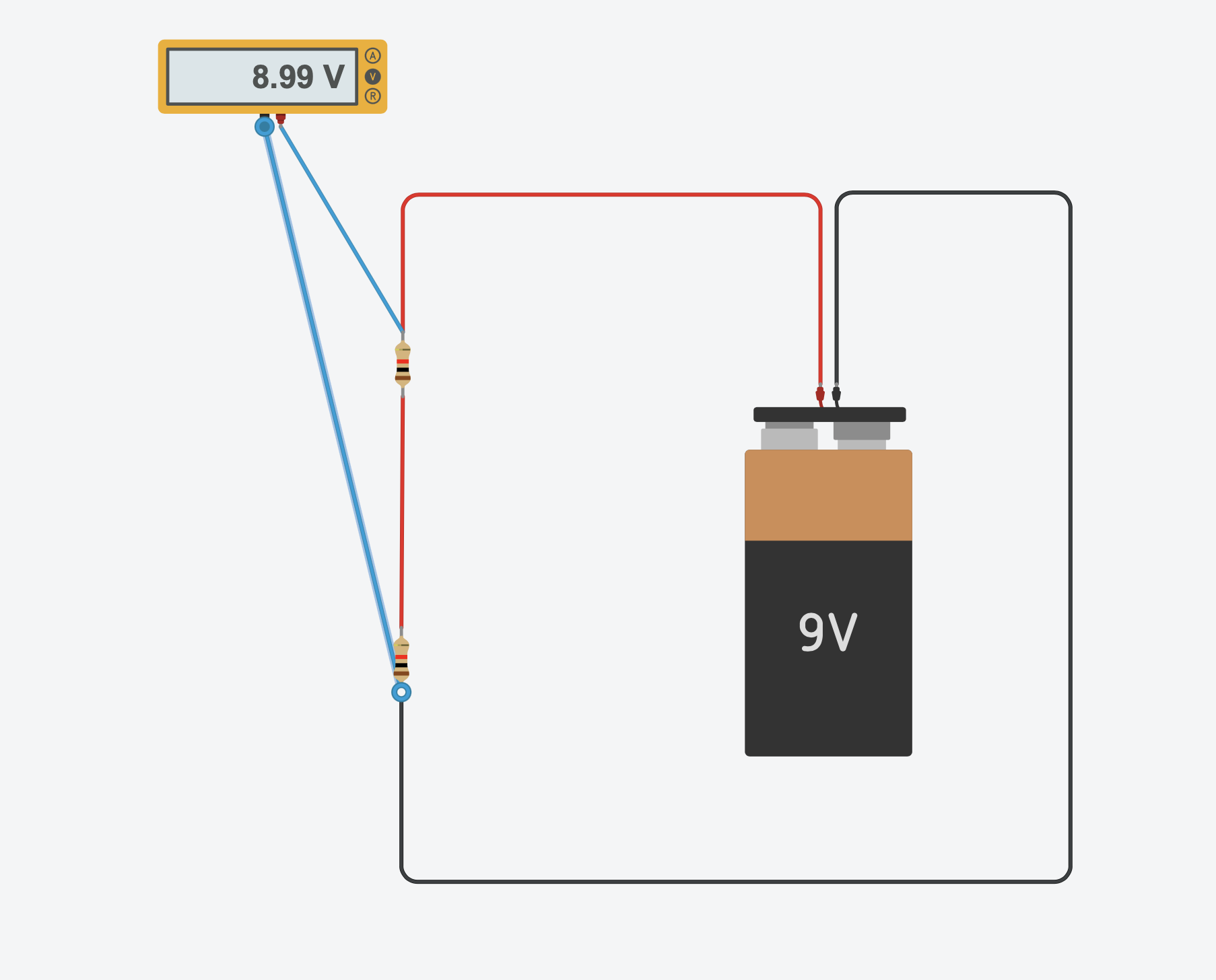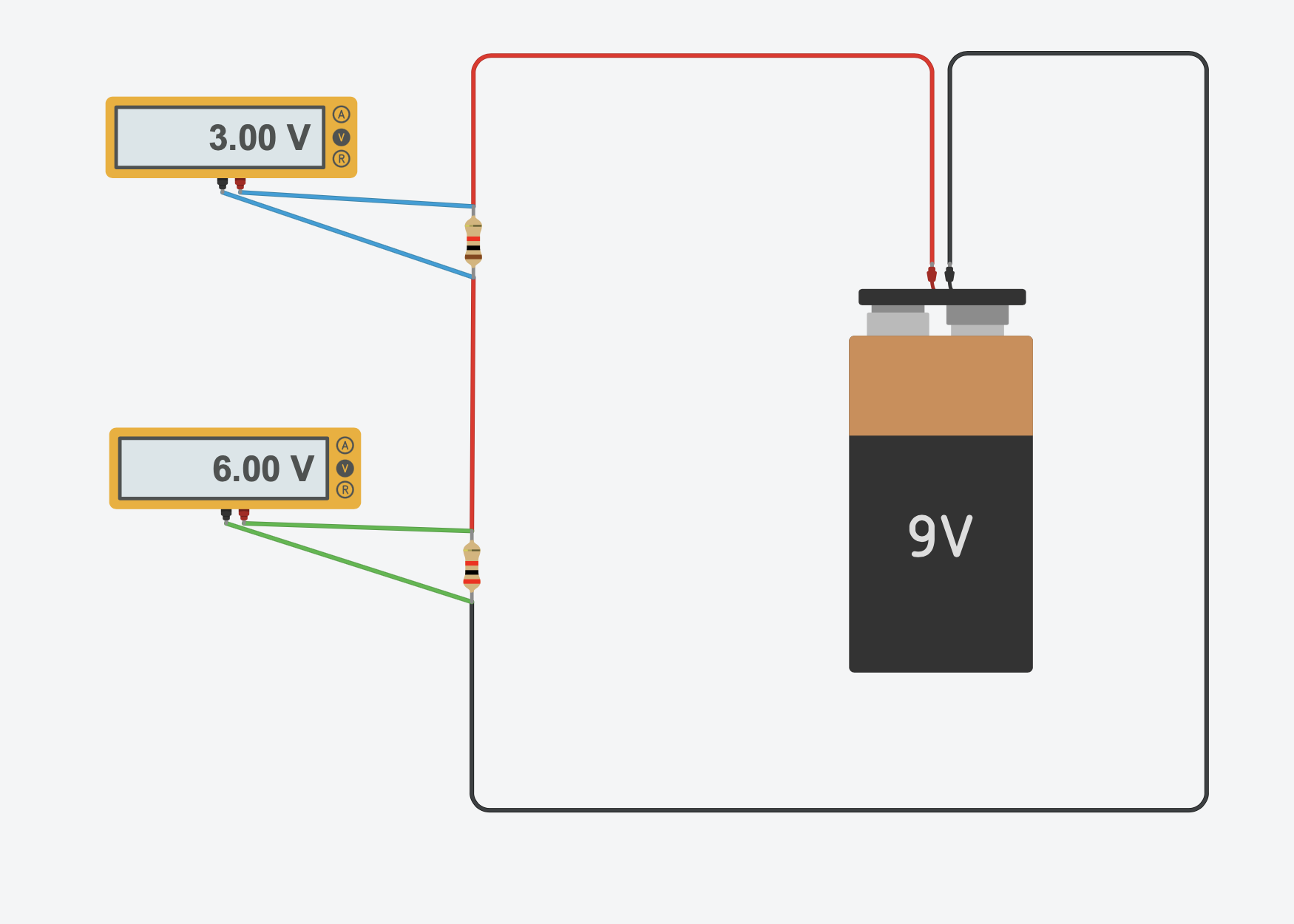Electronic Project: Build a voltage divider
One usage of resistors is to create a voltage divider.
If you put 2 resistors in series (one after another) in a circuit, like this:

and you measure the voltage drop after the first resistor, you can observe that if the resistors have the same resistance value, for example 1kΩ, the tension after the first resistor is exactly half the original tension.

This is because in a circuit the sum of all voltages around any closed loop must equal zero (this is Kirchhoff’s voltage law).
The difference in voltage measured before the first resistor, and after the second resistor, is ~9V, the voltage provided by the battery.

If you double the resistance of the second resistor, the voltage drop after the first resistor is 3V, while the voltage drop after the second is 6V:

This means that we can adjust the voltage served to a component by using resistors.
The formula to calculate the tension between the two resistors, R1 being the first one linked to the + pole of the battery and R2 the second one, is: V * (R2 / (R1 + R2)).
→ I wrote 17 books to help you become a better developer:
- C Handbook
- Command Line Handbook
- CSS Handbook
- Express Handbook
- Git Cheat Sheet
- Go Handbook
- HTML Handbook
- JS Handbook
- Laravel Handbook
- Next.js Handbook
- Node.js Handbook
- PHP Handbook
- Python Handbook
- React Handbook
- SQL Handbook
- Svelte Handbook
- Swift Handbook
Also, JOIN MY CODING BOOTCAMP, an amazing cohort course that will be a huge step up in your coding career - covering React, Next.js - next edition February 2025